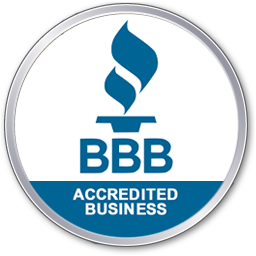The last time you moved into a new home or office building, you may have been advised to have it tested for radon to help keep you and other occupants safe. This probably left you wondering, “What is radon, anyway?”
Radon is a naturally occurring radioactive gas that has no odor, color or taste, which makes it impossible to detect without a specially designed radon test. It exists nearly everywhere in small amounts, meaning no building is immune. The U.S. Environmental Protection Agency (EPA) estimates that nearly one out of every 15 homes in the U.S. has elevated levels of radon.
If large amounts of radon gas enter your home and become trapped, it can pose dangers to your health. Breathing in elevated levels of radon gas can damage the cells in your lungs, which could increase your risk of developing lung cancer. In fact, inhaling radon gas is the second leading cause of lung cancer in the U.S., according to the EPA.
Luckily, there are some simple steps you can take to determine whether radon gas is present in your home and to control its amount.
Where Does Radon Gas Come From?
Radon gas is released when natural radioactive metals like uranium and radium decay. These metals are found in the Earth’s crust and are present in elements like soil, rocks and water.
As radon gas is released during radioactive decay, it rises up through the soil, where it can enter your home through:
- Cracks or holes in your foundation;
- Gaps between pipes;
- Wells;
- Cracks in your floor or walls;
- Or other openings that are wide enough to let gas seep through.
Radon gas can also be released by certain building products, though this is less common.
Because there are so many potential points of entry for radon gas, all homes are susceptible, regardless of their age, condition or location. That’s why the EPA and U.S. Centers for Disease Control and Prevention (CDC) recommend radon testing for all homeowners to ensure you and your family are protected.
While radon can be found anywhere, there are certain parts of the country where elevated levels of radon gas are more common. Most of Oregon falls into the EPA’s Radon Zone 2 designation, which means our area has moderate potential for indoor radon levels to be above average. The Oregon Health Authority further breaks down risk level by zip code, with the Portland area accounting for some of the highest levels of radon in the state.
Fortunately, you don’t have to be left wondering whether your home has potentially harmful levels of radon gas. Radon testing is easy and inexpensive, and utilizing a long-term test (measuring more than 90 days) can provide you with accurate results that account for natural changes in radon gas levels over time. This testing is recommended even if you live in an area of lower risk.
Where is Radon Most Prevalent?
Because radon gas rises up through soil, the parts of your home that are lowest to the ground (or that are underground) are the most susceptible to radon exposure. This includes basements, crawl spaces and cellars. However, upper levels aren’t in the clear, as radon can also be found in high concentrations in floors above ground level.
Geographically, radon levels are higher in some states than others. This variance can be attributed to the volume of uranium in the area and the types of rocks that are present.
All rocks contain uranium, but some types have a higher level of uranium content than others. Limestone, granite and some sedimentary and metamorphic rocks contain large amounts of uranium, which means areas in which these types of rocks are common are more likely to have elevated radon levels.
However, the amount of radon gas that is emitted through the soil also depends on other elements like the climate, porosity of the soil and the amount of moisture present. Radon levels are often highest in the winter because the air inside your home is warmer than the air outside, which creates a vacuum effect. Your furnace may also pull air from your basement or crawl space to help heat your home, which can allow radon gasses to circulate and rise quicker.
What Can Be Done About Radon?
Because radon gas can be harmful to your health, it’s important to remedy the problem if your in-home radon test indicates levels that are above average.
During testing, radon is measured in either picocuries per liter or Becquerels per cubic meter, both of which measure the concentration of radon gas in the air. If your home’s level of radon is at or above 148 Becquerels per cubic meter (or four picocuries per liter), the EPA recommends taking action to reduce the amount of radon in your home.
Radon mitigation can reduce radon levels in your home by up to 99% and also help to prevent it from returning. The process is often affordable, with costs similar to that of other typical home repairs.
At Alpha Environmental, we use a mixture of depressurization barriers and simple ventilation systems that use venting techniques to lower the amount of radon that enters a home. The exact type of system used depends on each specific situation and risk levels in the area. While most homes can be retrofitted with a mitigation system, larger homes with more elaborate foundation structures may require other methods for reducing radon.
Radon mitigation systems must meet certain criteria set forth by local regulatory agencies. Our team handles the permits and inspections necessary to install the system. The installation typically takes between five to seven days, and post-mitigation long-term testing is recommended within one year to make sure the system has returned the amount of radon gas present to acceptable levels. After that initial year, we also recommend having a short-term test completed every two years to ensure the system is still working as it should.
Contact Us for Radon Services in Portland, OR
If you’re a home or business owner, having a professional radon test completed is necessary to ensure the safety of your family or building occupants. Get the information you need by scheduling your radon test today!




